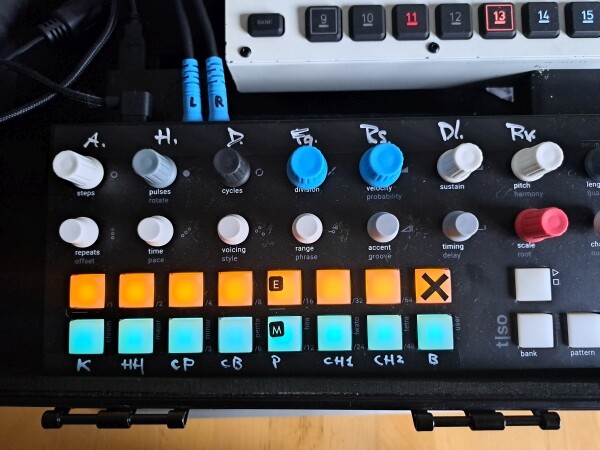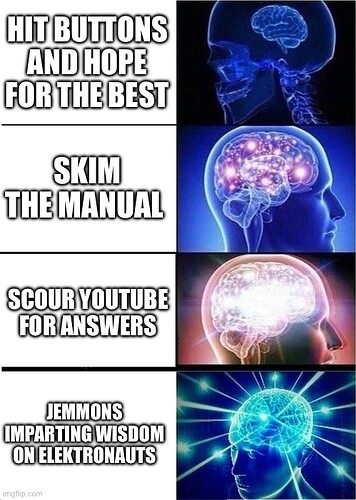I understand your position. Maybe Syntakt would be a nice solution for your utilisation of T1. All in a box (drum and synth) with cool external sequencer.
Yes, when using T1 in conjunction with Elektron sequencers, it seems redondant. It is. I feel the same with AR and A4. Since i’m still more efficient for programming with the hands directly on Elektron, i sometimes asking me the same question.
But, i really see the point of keeping my T1.
I’m not keyboard player, and i really appreciate the very efficient and fast way of writing pattern variations with Torso. Lot of things to try and keep with Temp. Elektron sequencers can’t do that way as T1 for the research of evolutives chords or notes
Futhermore, being able to change lenght, number of trigs or division of all tracks or parts of them, so easely and fast, is a rare ability for sequencers. It give a fantastic and simple tool for live impro.
So t1 with AR and multitimbral synth is a very creative combo. Even t1, AR and A4 (that can give a 3 notes chords and a monosynth at the same time) is an nice and compact set.
T1 is also a powerfull scrapbook that can be recorded in other sequencers (even Elektron ones) to be developped and/or deepened.
I really think that Torso and Elektron sequencers is a productive association.




 ).
).
